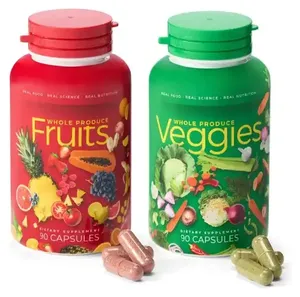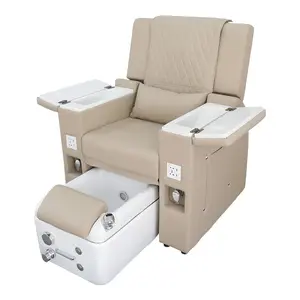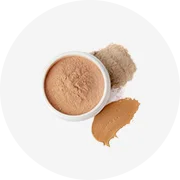Phổ biến trong ngành của bạn

Dụng cụ Đo mức độ nhựa 10W / 50W /70W sậy Float cấp chuyển bể mực nước cảm biến Float chuyển
1,00 US$ - 1,79 US$
Đơn hàng tối thiểu: 10 Cái
Vận chuyển mỗi chiếc: 4,04 US$


Thiết Bị Đo Mực Nước PL301 Có Thể Tùy Chỉnh Máy Phát Mức Chìm Giá Cảm Biến Mực Nước
25,00 US$ - 60,00 US$
Đơn hàng tối thiểu: 1 Cái


Wtssensor RS485 thép không gỉ thủy lực cảm biến mực nước nóng cảm biến mực nước trạm xăng bình nhiên liệu cảm biến mức
26,00 US$ - 32,00 US$
Đơn hàng tối thiểu: 1 Cái
Vận chuyển mỗi chiếc: 20,00 US$


4-20mA Hart RS485 316L thủy tĩnh chìm máy phát áp lực Tank mực nước cảm biến cho DIESEL mức chất lỏng
25,00 US$ - 60,00 US$
Đơn hàng tối thiểu: 1 Cái


Cảm biến mực nước bằng thép không gỉ thép không gỉ Floater loại sậy Cảm biến điều khiển cảm biến mức chất lỏng
4,39 US$ - 4,99 US$
Đơn hàng tối thiểu: 10 Cái
Vận chuyển mỗi chiếc: 5,45 US$


M12 Side gắn SUS304 Rod và nhựa nổi bóng Float Loại cảm biến mức chất lỏng Float cảm biến trong kho
8,71 US$ - 11,74 US$
Đơn hàng tối thiểu: 10 Cái
Vận chuyển mỗi chiếc: 12,87 US$

Cảm Biến Vị Trí Tuyến Tính Miran Từ Trường Loại MTC 80Mm 0-5V Đầu Ra Tín Hiệu
Sẵn sàng vận chuyển
300,00 US$ - 315,00 US$
Đơn hàng tối thiểu: 1 Cái
Vận chuyển mỗi chiếc: 37,17 US$

Guihe Cảm Biến Mức Bình Nhiên Liệu Diesel Trạm Xăng Máy Đo Mức Dầu Tự Động Từ Tính Đầu Dò Atg
300,00 US$ - 600,00 US$
Đơn hàng tối thiểu: 1 Bộ

XKC Công Tắc Cảm Biến Mức Y25 T12V Y25-T12V Máy Dò Loại Thanh Cảm Biến Không Tiếp Xúc Với Nhà Sản Xuất Nước
3,56 US$ - 5,55 US$
Đơn hàng tối thiểu: 5 Cái

50W que Chiều dài 80mm nhiệt độ cao gắn bên kiểm soát mức chất lỏng L hình dạng không gỉ Float chuyển
4,49 US$ - 5,09 US$
Đơn hàng tối thiểu: 10 Cái
Vận chuyển mỗi chiếc: 6,52 US$

Taidacent M12 hơi nước nồi hơi mực nước thăm dò thép không gỉ điện cực loại mực nước thăm dò nồi hơi kiểm soát nhiệt độ thăm dò
3,28 US$ - 3,88 US$
Đơn hàng tối thiểu: 5 Cái
Vận chuyển mỗi chiếc: 4,75 US$

Nhiệt độ cao SS hoặc đồng thau 2 điện cực que loại mực nước thăm dò cảm biến cho bể nước
4,99 US$ - 6,99 US$
Đơn hàng tối thiểu: 1 Cái
Vận chuyển mỗi chiếc: 23,68 US$
Các tìm kiếm liên quan:

Float loại đo mức Float loạt cảm biến mức tùy chỉnh 20cm-200cm que Chiều dài mực nước cảm biến
15,40 US$ - 100,00 US$
Đơn hàng tối thiểu: 10 Cái

M10 và 75mm que chiều dài theo chiều dọc bể nước Float chuyển Float Loại cảm biến mức, cảm biến mức ngang
2,50 US$ - 4,00 US$
Đơn hàng tối thiểu: 1 Cái
Vận chuyển mỗi chiếc: 25,19 US$

Hệ Thống Giám Sát Nhiên Liệu Holykell HPT621 Cảm Biến Mức Bình Điện Dung Cảm Biến Mức Loại Thanh
Sẵn sàng vận chuyển
95,00 US$ - 120,00 US$
Đơn hàng tối thiểu: 10 Cái
Vận chuyển mỗi chiếc: 40,42 US$


Sentec spv505 rung Rod loại mức độ vật liệu chuyển đổi rung cảm biến mức độ với Relay Kết quả đầu ra
105,00 US$
Đơn hàng tối thiểu: 1 Cái
Vận chuyển mỗi chiếc: 16,41 US$

Cấp Thực Phẩm Điền Vào Cấp Độ Thức Ăn Cảm Biến Rod Loại 0 10V Chiều Cao Cảm Biến Mực Nước Silo 3d Cảm Biến Chỉ Báo Mức
490,00 US$ - 515,00 US$
Đơn hàng tối thiểu: 1 Cái

Nhà Sản Xuất Thiết Bị Cảm Biến Dạng Thanh NUOYING Máy Phát Mức Radar Dẫn Hướng NYRD702 Của Nhà Sản Xuất
109,00 US$ - 519,00 US$
Đơn hàng tối thiểu: 1 Đơn vị

Nổ bằng chứng Kính thiên văn mức chất lỏng đo, độ chính xác cao Rod loại chống ăn mòn nổi bóng cảm biến mức chất lỏng
298,00 US$
Đơn hàng tối thiểu: 1 Bộ
Vận chuyển mỗi chiếc: 77,50 US$

Nổ bằng chứng Kính thiên văn mức chất lỏng đo, độ chính xác cao Rod loại chống ăn mòn nổi bóng cảm biến mức chất lỏng
63,00 US$ - 84,00 US$
Đơn hàng tối thiểu: 1 Cái

Cảm Biến Mức Radar Loại Nước Công Nghiệp Không Tiếp Xúc
963,00 US$ - 980,00 US$
Đơn hàng tối thiểu: 1 Cái

Thép không gỉ đa-float nhiên liệu nước Tank chỉ số mức độ chuyển đổi cảm biến dễ cháy dọc de 4-20 ma
40,00 US$ - 60,00 US$
Đơn hàng tối thiểu: 10 Cái

Loại Cảm Biến Mức Magnetostrictive An Toàn Lắp Đặt Liên Tục Loại Cảm Biến Chống Cháy Nổ
310,00 US$ - 400,00 US$
Đơn hàng tối thiểu: 1 Cái

Drop-in mức chất lỏng Transmitter SS304 mức độ thăm dò công nghiệp cảm biến mức giá tốt
Sẵn sàng vận chuyển
80,00 US$ - 118,00 US$
Đơn hàng tối thiểu: 1 Cái
Vận chuyển mỗi chiếc: 23,51 US$

Công Tắc Mức Vật Liệu Loại Thanh Rung ESMZB-100, Cảm Biến Mức Ngã Ba Điều Chỉnh Với Đầu Ra Rơ Le
70,00 US$ - 200,00 US$
Đơn hàng tối thiểu: 2 Cái

Trung Quốc ISO9001 Silo PE Hạt Điện Dung Mức Meter Bể Nước Mức Transmitter Điện Dung Mức Chất Lỏng Cảm Biến
250,00 US$ - 281,00 US$
Đơn hàng tối thiểu: 1 Cái
Vận chuyển mỗi chiếc: 55,23 US$

Máy phát mức Radar 80Ghz ống kính nhỏ chống ăn mòn cảm biến đo mức Radar
420,00 US$ - 510,00 US$
Đơn hàng tối thiểu: 3 Cái
Vận chuyển mỗi chiếc: 17,68 US$

Chống ăn mòn không thấm nước siêu âm nước cảm biến mức chất lỏng với gốm cảm biến điện dung cho công nghiệp hóa chất
130,00 US$ - 350,00 US$
Đơn hàng tối thiểu: 1 Cái

Điện Dung Loại Que Mức Chất Lỏng Transmitter Đài Phát Thanh Tần Số Kết Nạp Cảm Biến Chống Ăn Mòn Nhiệt Độ Cao 4-20 MA
Sẵn sàng vận chuyển
125,00 US$ - 155,00 US$
Đơn hàng tối thiểu: 1 Cái
Vận chuyển mỗi chiếc: 42,61 US$

Vacorda hướng dẫn sóng que loại bể nước Vega Radar cấp transmitter cho thủy lợi
388,00 US$
Đơn hàng tối thiểu: 1 Cái
Vận chuyển mỗi chiếc: 99,20 US$

Mini Chống Ăn Mòn Đầu Gắn Pvdf Que PP Mức Float Swith Cho Nước Float Chuyển
1,25 US$ - 2,50 US$
Đơn hàng tối thiểu: 100 Cái

Từ Giảo Mực Nước Cảm Biến Mức Độ Tank Đo Nhà Cung Cấp
50,00 US$ - 1.500,00 US$
Đơn hàng tối thiểu: 1 Cái

Công tắc mức phao thanh kết nối snk520
55,00 US$ - 65,00 US$
Đơn hàng tối thiểu: 1 Cái
Vận chuyển mỗi chiếc: 14,91 US$

Gltv4 100-700 mét Máy phát điện cơ khí Sight Level Gauge cho DIESEL Tank
17,00 US$ - 49,00 US$
Đơn hàng tối thiểu: 1 Cái

Cảm Biến Mức Áp Suất 4-20mA Máy Đo Mức Chìm Chống Ăn Mòn Với Màn Hình Kỹ Thuật Số
130,00 US$ - 190,00 US$
Đơn hàng tối thiểu: 1 Cái

4-20mA RS485 chống nổ ATG hệ thống magnetostrictive mức chất lỏng Meter
Sẵn sàng vận chuyển
180,00 US$ - 200,00 US$
Đơn hàng tối thiểu: 1 Cái
Vận chuyển mỗi chiếc: 47,38 US$

Mức chất lỏng chuyển đổi Rod loại từ Float sậy chuyển đổi cảm biến gắn trên side-gắn kết chống nổ Float cấp mét
Sẵn sàng vận chuyển
125,00 US$ - 154,00 US$
Đơn hàng tối thiểu: 1 Mẫu Anh
Vận chuyển mỗi chiếc: 16,70 US$

Thép không gỉ mức độ chuyển đổi từ Float mức độ chuyển đổi mức độ dụng cụ đo lường
48,00 US$ - 55,00 US$
Đơn hàng tối thiểu: 1 Bộ

Vrpwrd32 hướng dẫn sóng Radar anologue đầu ra cảm biến mức nhiên liệu loại liên lạc
399,00 US$
Đơn hàng tối thiểu: 1 Đơn vị
Các danh mục hàng đầu
Giới thiệu về cảm biến mức loại que
Ngày nay, cảm biến mức loại que không còn là điều mới mẻ đối với những người bình thường và không còn bị coi là điều cấm kỵ khi sử dụng. Nếu bạn đang tìm kiếm niềm vui áp chót đó, bạn phải kiểm tra sự bao la. Bộ sưu tập cảm biến mức loại que tại Alibaba.com. Những gợi cảm và cong. cảm biến mức loại que đáng giá từng xu và chắc chắn làm cho đêm đó trở nên đặc biệt đối với bạn. Những con búp bê này có ngoại hình giống như thật, bắt đầu từ tóc đến ngón chân theo mọi nghĩa.
Cho dù bạn là một người cô đơn đang tìm kiếm một người bạn đời như cuộc sống hay một cặp vợ chồng muốn thêm gia vị cho cuộc sống của họ, bạn đều có thể sử dụng chúng . cảm biến mức loại que để đốt cháy ngọn lửa đó. Những ngoạn mục. cảm biến mức loại que có thể tùy chỉnh theo mong đợi của bạn. Những điều tuyệt vời. cảm biến mức loại que có sẵn ở cả phiên bản dành cho nam và nữ và được làm từ silicone cấp y tế để sử dụng an toàn. Hãy sở hữu ngay bây giờ và tận hưởng một đêm đam mê và cháy bỏng.
Alibaba.com cung cấp những điều tuyệt vời này. cảm biến mức loại que ở mọi hình dạng cơ thể, kích thước và sắc tộc. Dù yêu cầu của bạn đối với. cảm biến mức loại que, bạn có thể tải tất cả chúng trên trang web. Những cái này. cảm biến mức loại que được tạo hình bởi những người thợ thủ công giỏi nhất và mọi chi tiết phức tạp đều được kiểm tra kỹ lưỡng. Những con búp bê này có mắt, tóc, móng tay và tất cả các bộ phận cơ thể khác tương tự như người thật.
Alibaba.com cung cấp nhiều loại. cảm biến mức loại que có thể giúp bạn mua các sản phẩm phù hợp với ngân sách và các yêu cầu khác của bạn. Các sản phẩm này an toàn để sử dụng, được chứng nhận và thân thiện với môi trường trong tự nhiên. Đơn đặt hàng OEM có sẵn trên các sản phẩm này.
Cho dù bạn là một người cô đơn đang tìm kiếm một người bạn đời như cuộc sống hay một cặp vợ chồng muốn thêm gia vị cho cuộc sống của họ, bạn đều có thể sử dụng chúng . cảm biến mức loại que để đốt cháy ngọn lửa đó. Những ngoạn mục. cảm biến mức loại que có thể tùy chỉnh theo mong đợi của bạn. Những điều tuyệt vời. cảm biến mức loại que có sẵn ở cả phiên bản dành cho nam và nữ và được làm từ silicone cấp y tế để sử dụng an toàn. Hãy sở hữu ngay bây giờ và tận hưởng một đêm đam mê và cháy bỏng.
Alibaba.com cung cấp những điều tuyệt vời này. cảm biến mức loại que ở mọi hình dạng cơ thể, kích thước và sắc tộc. Dù yêu cầu của bạn đối với. cảm biến mức loại que, bạn có thể tải tất cả chúng trên trang web. Những cái này. cảm biến mức loại que được tạo hình bởi những người thợ thủ công giỏi nhất và mọi chi tiết phức tạp đều được kiểm tra kỹ lưỡng. Những con búp bê này có mắt, tóc, móng tay và tất cả các bộ phận cơ thể khác tương tự như người thật.
Alibaba.com cung cấp nhiều loại. cảm biến mức loại que có thể giúp bạn mua các sản phẩm phù hợp với ngân sách và các yêu cầu khác của bạn. Các sản phẩm này an toàn để sử dụng, được chứng nhận và thân thiện với môi trường trong tự nhiên. Đơn đặt hàng OEM có sẵn trên các sản phẩm này.











